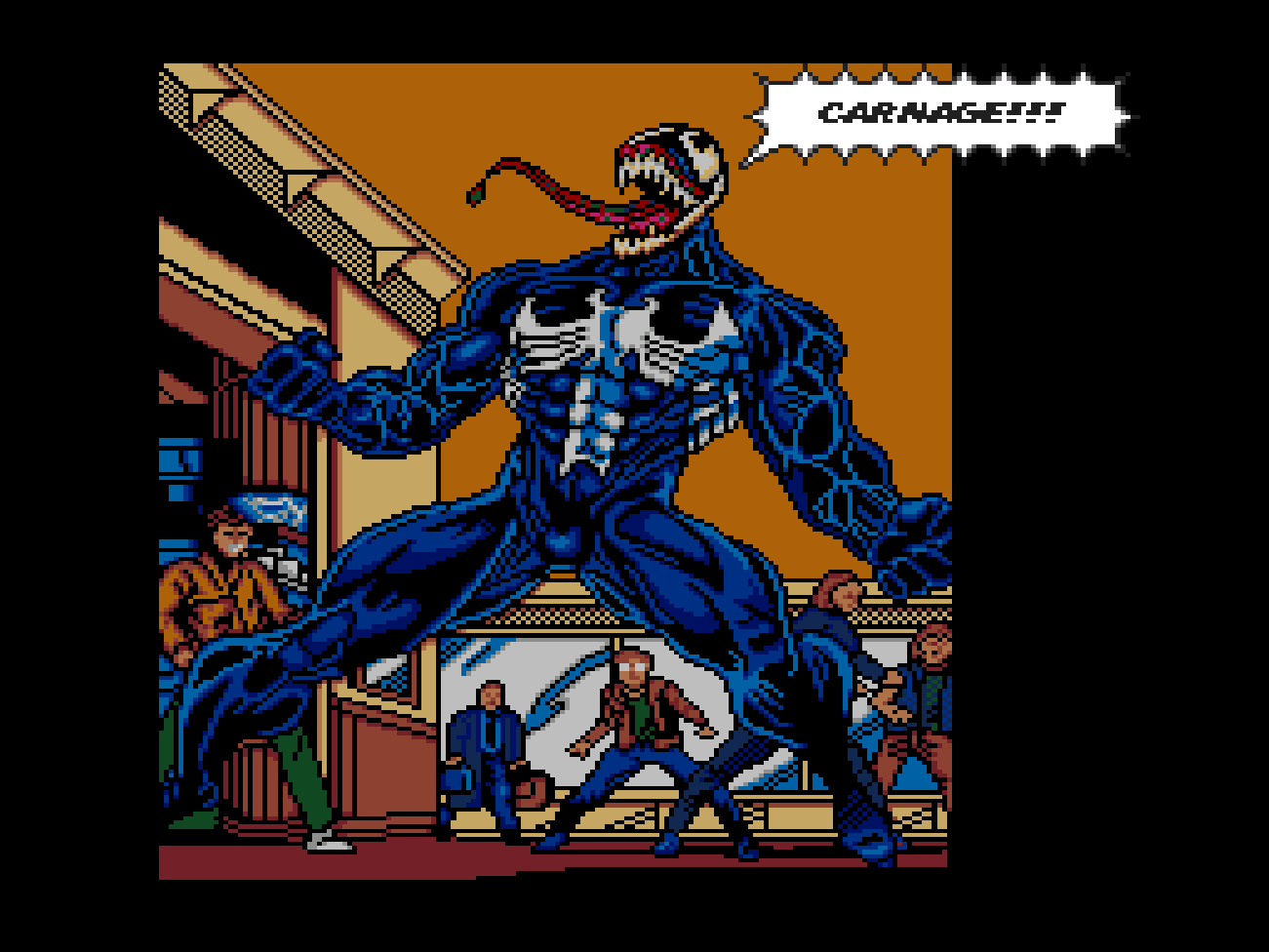
This article was originally published on June 3, 2023
Spider-Man swings around all over the place. From comic books to movie theaters to your soap, he’s basically everywhere. Like any kind of annoying bug, it can be easy to lump these adaptations all together. They’re all just spiders, right? In the era of MCUs and Spiderverses, the lines between Spider-Man stories have blurred. Well, I’ve had enough. I’m tying us down to a Spider Totem in an attempt to ground things.
In most Spider-Man adaptations, such as the cartoons or movies, the adapting media treats comic book stories less like blueprints and more like treasure chests to pillage. They haphazardly integrate moments of Spider-Man’s comic book history almost at random and mush them together. This method conveys the loose gist of the original stories rather than the literal stories themselves. While that often works fine, sometimes you just want to see the moments you like done in a different medium, not done as part of an entirely new thing altogether. Sometimes you want the anime adaptation of a manga, not the live action Netflix version. As the latter scenario demonstrates, the further you move away from the direct story, the more you risk losing the heart of it.
It follows then that the closer an adaptation comes to directly translating the source material into a new medium, the more “Spider-Man” it will be. Theoretically, anyway. Surprisingly few Spider-Man adaptations actually go this route, so when it comes to testing this theory only one big example comes to mind.
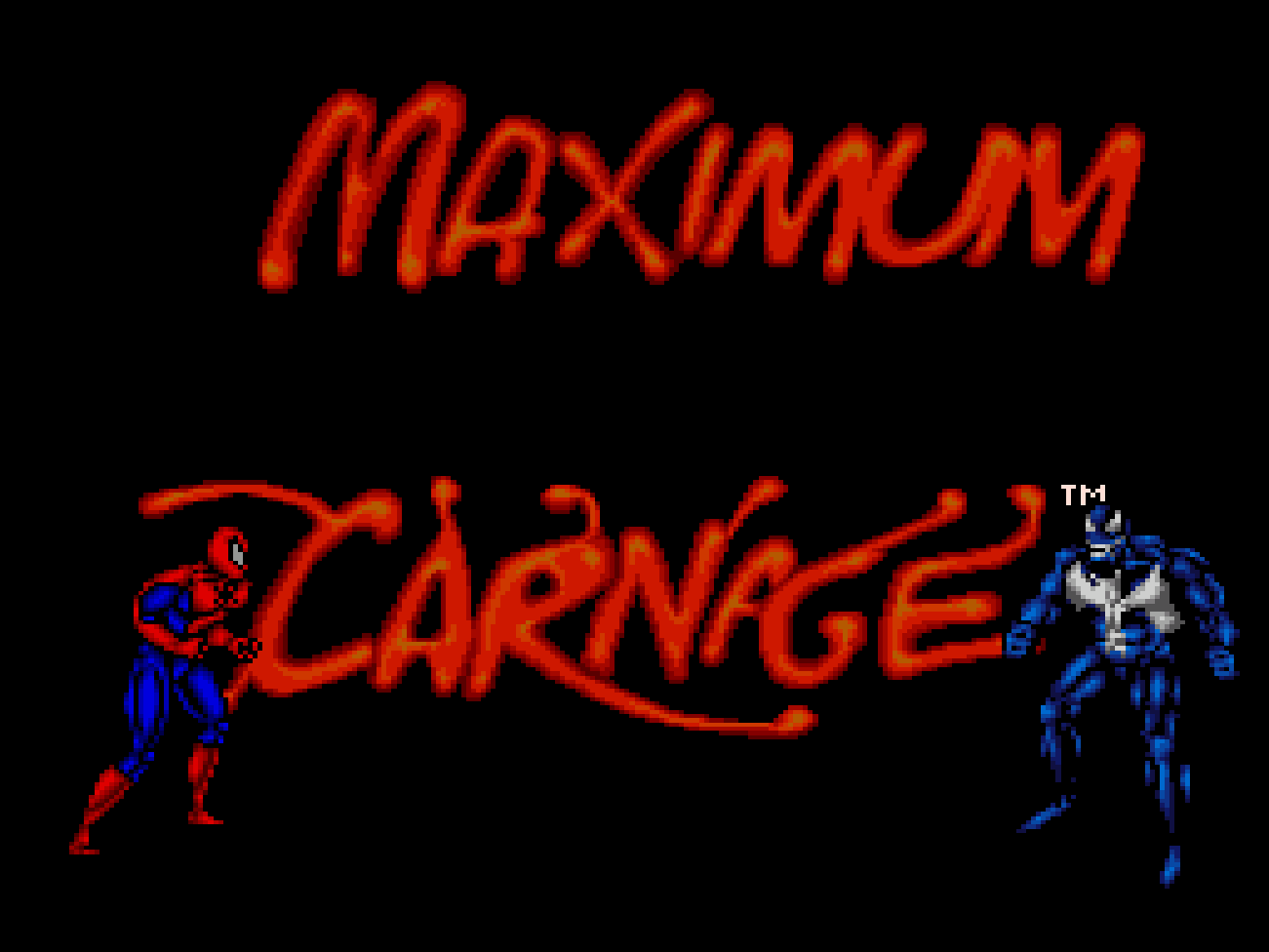
The Maximum Carnage video game may be the most direct adaptation that Spider-Man has ever received. Maximum Carnage follows the general plot of the comic book, includes all of the characters (sans Nightwatch, poor guy), and even directly integrates panels from the comic into the game as a storytelling device. It makes no attempt to establish some alternate continuity that works in the events of Maximum Carnage — it is Maximum Carnage, now in video game form.
Of course, before we go further, I suppose I should explain what Maximum Carnage is.
Depending on who you ask, Maximum Carnage represents everything wrong with comics in the 90s or everything that’s great about them. Both crowds tend to be thinking of the same exact things when judging it, so it’s really a matter of perspective. This massive story arc brought together just about every Spider-Man book on the market, as well as a staggering amount of characters from outside of the Spideyverse (legally distinct entity from the Spiderverse). It’s peak comic book excess: excessive length, excessive characters, excessive action, and, frankly, excessive even in its basic premise.
Once Marvel introduced Venom to The Amazing Spider-Man book at the tail-end of the 80s, the shadow he cast never really left. You couldn’t go more than a couple of arcs before Venom would show up again. His existence spun-off into the creation of the also extremely popular character Carnage, setting the stage for the alien symbiote well to be drawn from forever. Maximum Carnage, conceptually, leans into these extremely popular characters and delivers exactly what “The People” wanted to see: more Venom, more Carnage, more violence, and more crowded scenes of characters fighting.
Maximum Carnage fires on virtually every cylinder of mindlessly cool comic book action. Hard to pick something more perfectly suited for an arcade-style beat-em-up game than that!
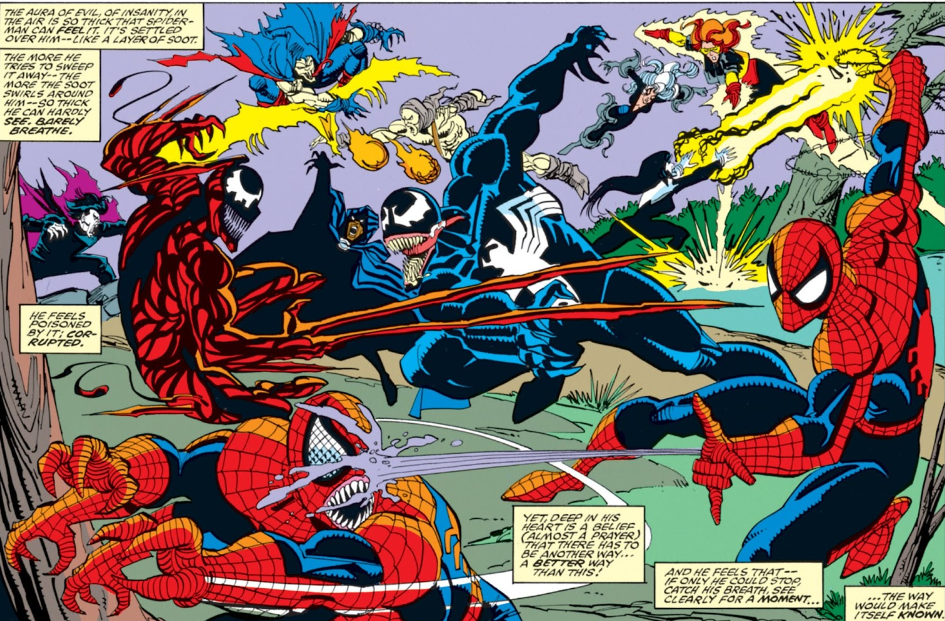
Although enjoyable on that indulgent, pandering kind of level, I’d say the story deserves just ever so slightly more credit than it tends to get. A real story exists buried beneath all the chaos and capitalization on trends. Just like Spider-Man himself, this narrative depth may be hindered by countless foes and obstacles, yet it endures through all of the harsh beatings it receives.
Stand back, True Believer. I’m about to explore the literary merits of Maximum Carnage. This may get messy.
At its core, Maximum Carnage tells a story about testing moral limits. Carnage is a moral blackhole; he’s pure evil through and through. He murders en masse with zero remorse and no amount of reasoning will ever reach him. People often complain that the super heroes should just kill the villains. Carnage provides the perfect example of a villain where that may be the best solution. As Carnage raises the stakes so high that the limits of society as a whole begin to break down, Spider-Man questions how far he’s willing to go to put an end to the madness.
How well this dilemma works for you will depend on how willing you are to buy into it being a dilemma at all. As I said, people constantly suggest that super heroes kill their villains. It’s an “easy” solution to what is arguably the most pervasive plotline in comics: the recurring villain broke out of jail and continues to kill people. However, that view wastes the entire premise of being a super hero in the first place.
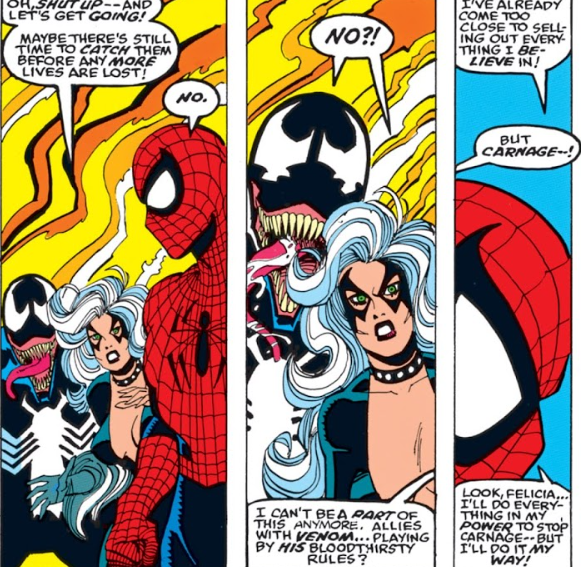
Too often people treat super heroes like they’re supposed to be realistic, that you’re supposed to literally model yourself after them and thus agree with everything they attempt to do. That interpretation misses the point. Super heroes are not real, they are fantastical by their very nature. Super heroes don’t need to exist if they’re just going to accomplish the same things that any random person with a gun can.
Super abilities give these characters the ability fight not only against super villains, but for their personal ideals, even if those ideals don’t neatly fit with our imperfect world. Although a normal person may not be able to change the world on their own, a super hero fares a far better chance. The strength of a super hero allows them to twist cold reality into an idealized fantasy, even if just for a moment. If a super hero automatically gives up hope of being able to accomplish the seemingly impossible, they lose out on the heart of their fantastical nature. I’m not saying that super heroes absolutely should not kill ever, either, but I am saying that the journey to the “easy” solution should not be easy for them.
You could argue that Spider-Man represents a special case. At the time of his inception, comic books were filled with idealized heroes. Spider-Man’s stories injected an unusual amount of reality into the situation by forcing him to deal with petty, mundane life problems in addition to the frequent doses of supervillainy.
However, the fact that Spider-Man approaches the concept of a superhero more realistically isn’t what makes him a compelling a character — not that fact alone, anyway. Spider-Man works because he maintains the ideals that come with being a super hero despite the realities that bear down on him. That conflict makes him who he is. Spider-Man weathers the storms of reality and fantasy alike, triumphing over both. His best stories allow him to transform reality into his own amazing fantasy in some ways, even if it’s not in every way. Even as his problems relentlessly assault him and even when he may lose sight of himself, his ideals and what he values give him the strength to carry on.
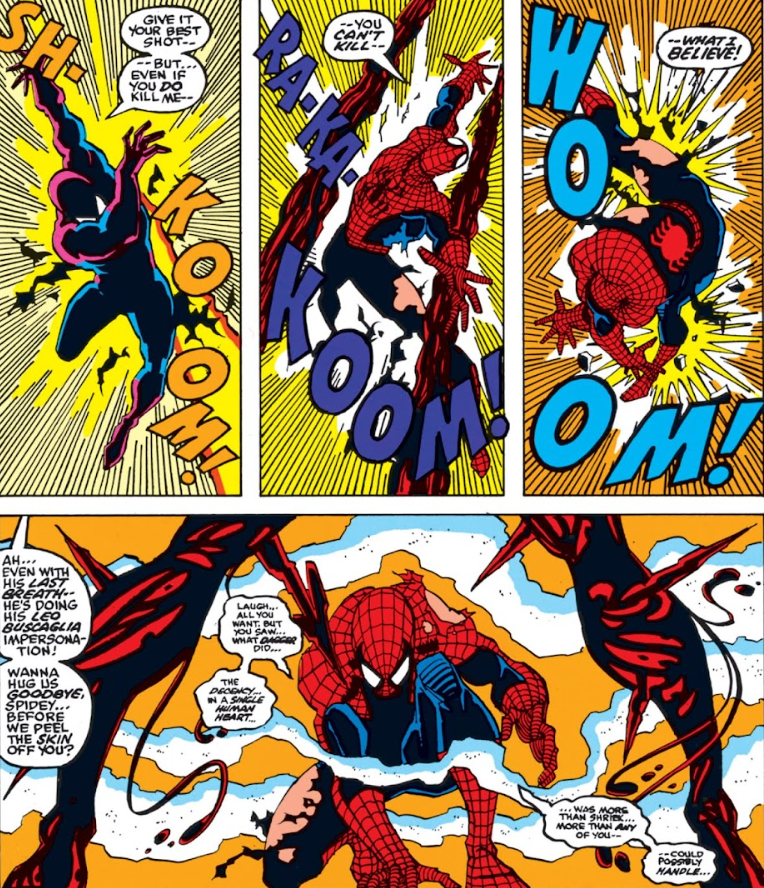
Whether you agree with the premise or not, this drama holds the Maximum Carnage story together. Spider-Man’s inner musings, conflicts with his allies, and conversations with his loved ones all explore the morality at play in a compelling way. These introspective moments give the story and the art a heart that elevates it beyond just seeing a bunch of cool-looking characters beating each other up. Without it, the story would fall headfirst entirely into being the brainless fan service it otherwise is.
It’s not a unique or perfectly told tale by any means, of course. This story suffers in two major areas: its pacing and its conclusion. Both problems stem from the business realities of the comic book market.
Marketing-wise, the big gimmick of Maximum Carnage was that it was such a huge story that it needed to be told across all of the Spider-Man books being sold at the time. Marvel intended to increase the sales prospects of all their books by making it essential that fans pick them all up over the course of a few months, so that meant there needed to be a story long enough to fill approximately a few months worth of issues across all of their books. The end result totals an impressive fourteen chapters. This decision bloats the story with several skirmishes between the heroic and villainous factions that barely move the plot along.
As the insanity drags on, Spider-Man’s moral dilemma loses its impact. It’s one thing to hesitate to kill Carnage once; after about three times it begins to grate. The problem lies in the fact that Spider-Man fails to do anything proactive about the situation. He simply inserts himself into every battle seemingly hoping that the plot will inexplicably resolve in his favor. As Spider-Man consistently fails to conjure up any kind of alternative to Venom’s murder plan or at least try something new, it begins to make him look incompetent and overly naïve rather than someone who fights for his ideals. You still get good moments out of Spider-Man’s stance anyway, you just have to forgive a lot of the story’s padding to fully appreciate them.

Pacing matters a little less here than the final conclusion. Throughout the many twists and turns of Maximum Carnage, it teases multiple potential resolutions where fantasy can overcome reality. Carnage could actively reject the road to salvation and choose to die, or his mind could break to the point of incapacitation, or he could even lose his symbiote, and thus his ability to become Carnage, forever.
The last option is ultimately what happens. I can appreciate the overall idea that while Spider-Man’s words may not reach Carnage, they do reach Venom. Spider-Man, for a brief moment, effected change and solved the situation through his idealistic nature, even if he did so indirectly.
Unfortunately, even the story itself seems painfully aware that this resolution won’t stick. The ending works alright for this story, but loses impact in the long run. As the ensuing decades of comic books show, popular characters will never truly die or go away. Carnage has returned plenty of times following this arc and will continue to return plenty of times in the future. That’s the nature of the comic book business! If you don’t go into the medium willing to appreciate stories in their own little bubble, extended continuity will eventually ruin everything you enjoy!

So all of that is to say that moral conflict underpins the heart of Maximum Carnage. That’s the real story, even if it may not be a perfect one.
Important to note, then, that the video game contains virtually no hint of that moral conflict whatsoever. Yes, despite outright including a multitude of panels directly from the story itself, it lacks the overall point of the story. Most key scenes relating to morality are notably absent. The lone survivors of this purge are the scenes where Spider-Man flips out a violent crowd and the scene where Firestar refrains from roasting Carnage alive. Yet removed from the greater context, you wouldn’t be able to tell that these scenes were meant to serve any true thematic purpose.
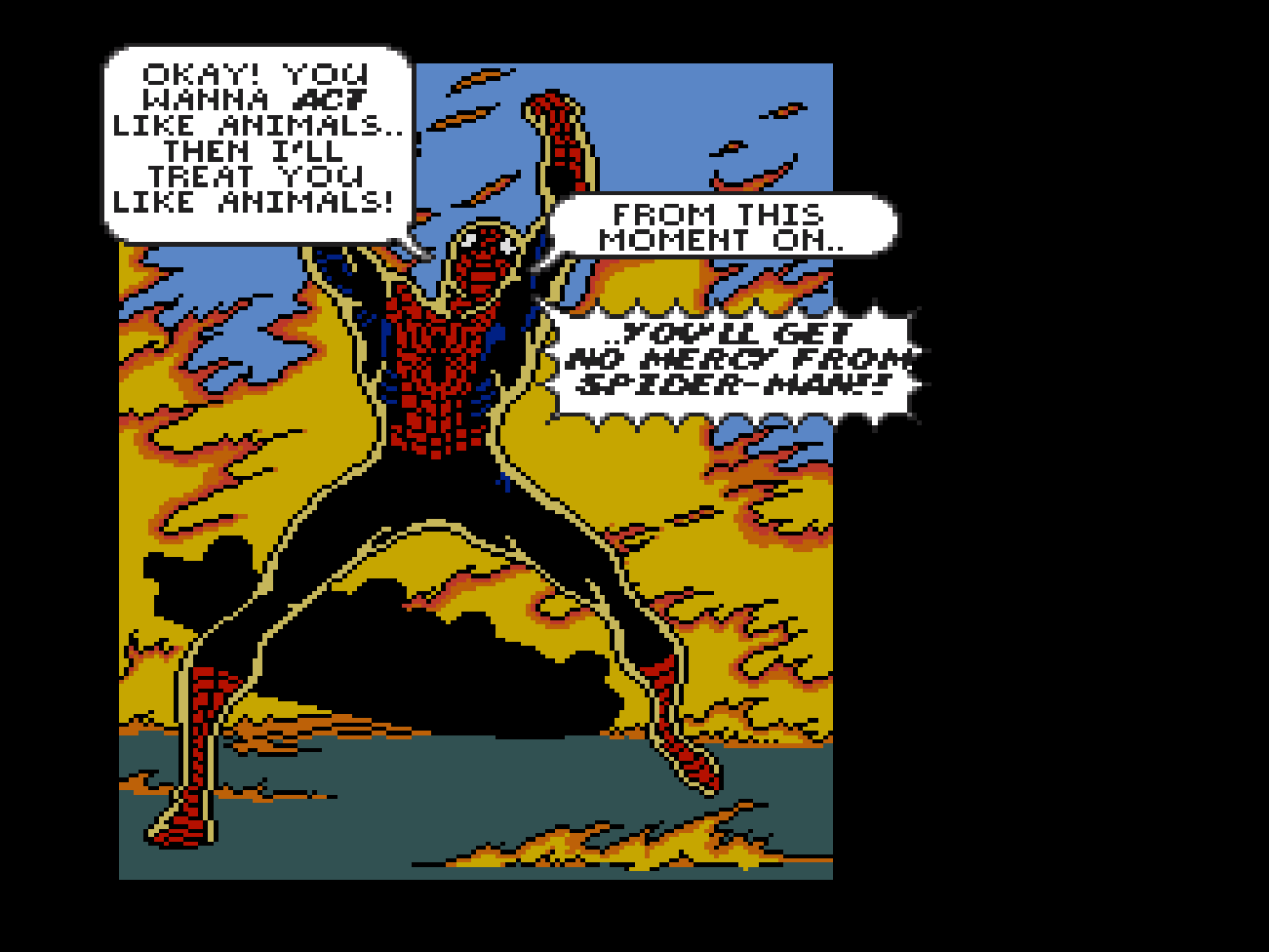
Similarly, multiple key scenes such as coercing J. Jonah Jameson into setting a trap for Carnage or stealing a hypersonic gun from the Fantastic Four notably bring the supposed heroes closer to their depraved villain counterparts. The characters comment on these blurring lines frequently, and the game skips over all of it.
For whatever reason, whether it was because the developers didn’t want people to think too deeply about the story or simply to save memory space on the game cartridge, the actual narrative ends up being a shallow recreation of the original. The Maximum Carnage video game is about beating up the bad guys. Nothing more, nothing less.
By excising the heart of the story, it forces the experience into resembling something as mindless as people would cynically assume. That treatment not only does the source material a disservice, but the game itself.
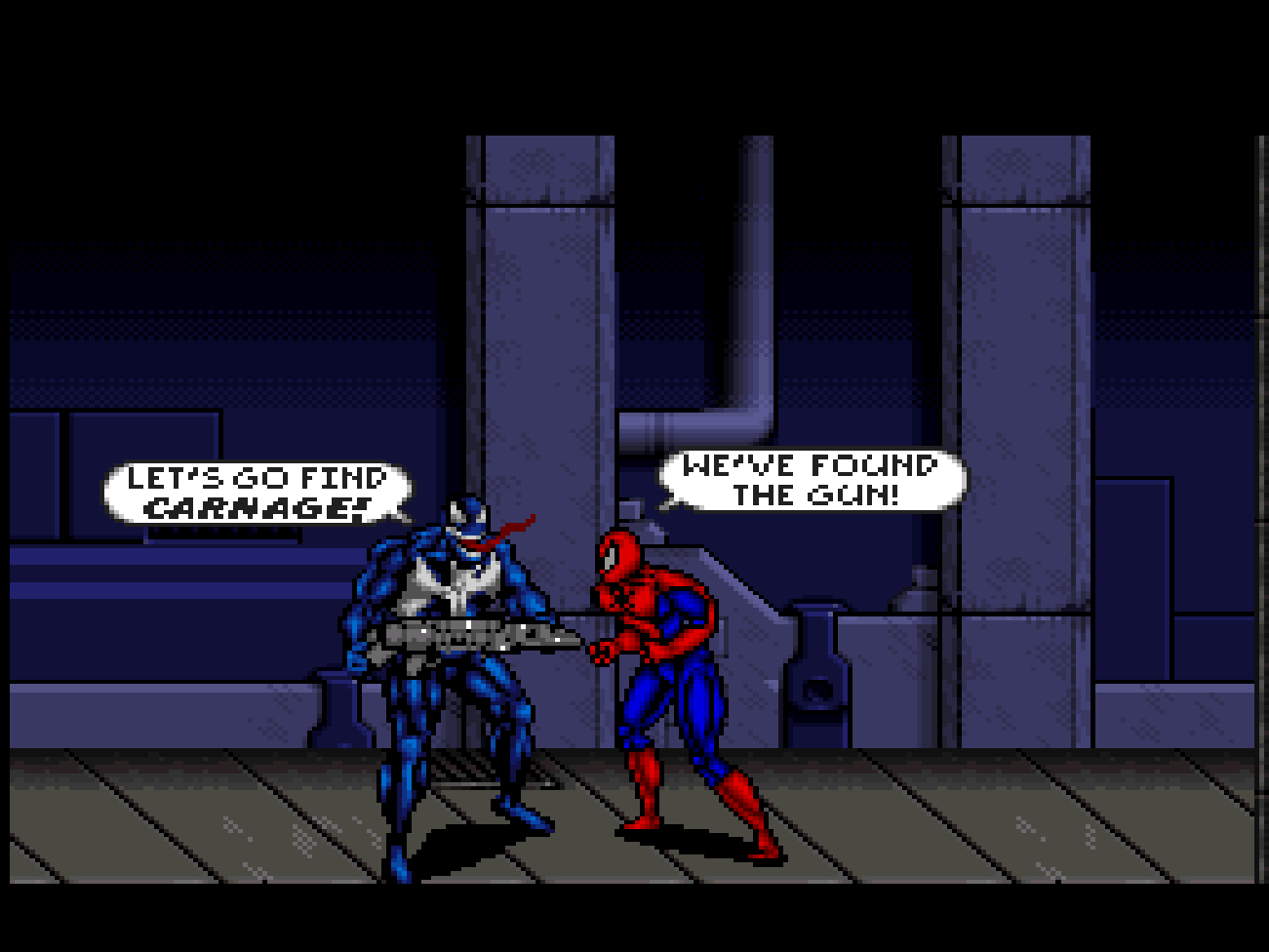
Beat-em-ups and comic books (especially 90s comic books!) share a similarly bad reputation for being mindless. In both cases, though, that reputation generally comes from a lack of willingness to engage with the source material. Maximum Carnage is not a totally mindless story, and it is also not a totally mindless game.
Most beat-em-ups garner a reputation for being unfair due to the genre’s arcade origins. They’re made to steal you money, or something like that! Due to their moneygrubbing nature, they’re not worth taking seriously. You just mash some buttons and call it a day. They get written off as either being too hard, too simple, or both.
That talking point often forgets that most arcade games, even if initially unfair, are completely beatable with knowledge and practice. All of the enemies follow specific patterns that can exploited. Most games contain additional tricks and tactics to master. All of this adds depth to the experience as well as a sense of fairness. Armed with that knowledge, these games can be just fun as any other, with or without any intent to take your quarters. This rings especially true for arcade-style games that were never released in the arcades to begin with.
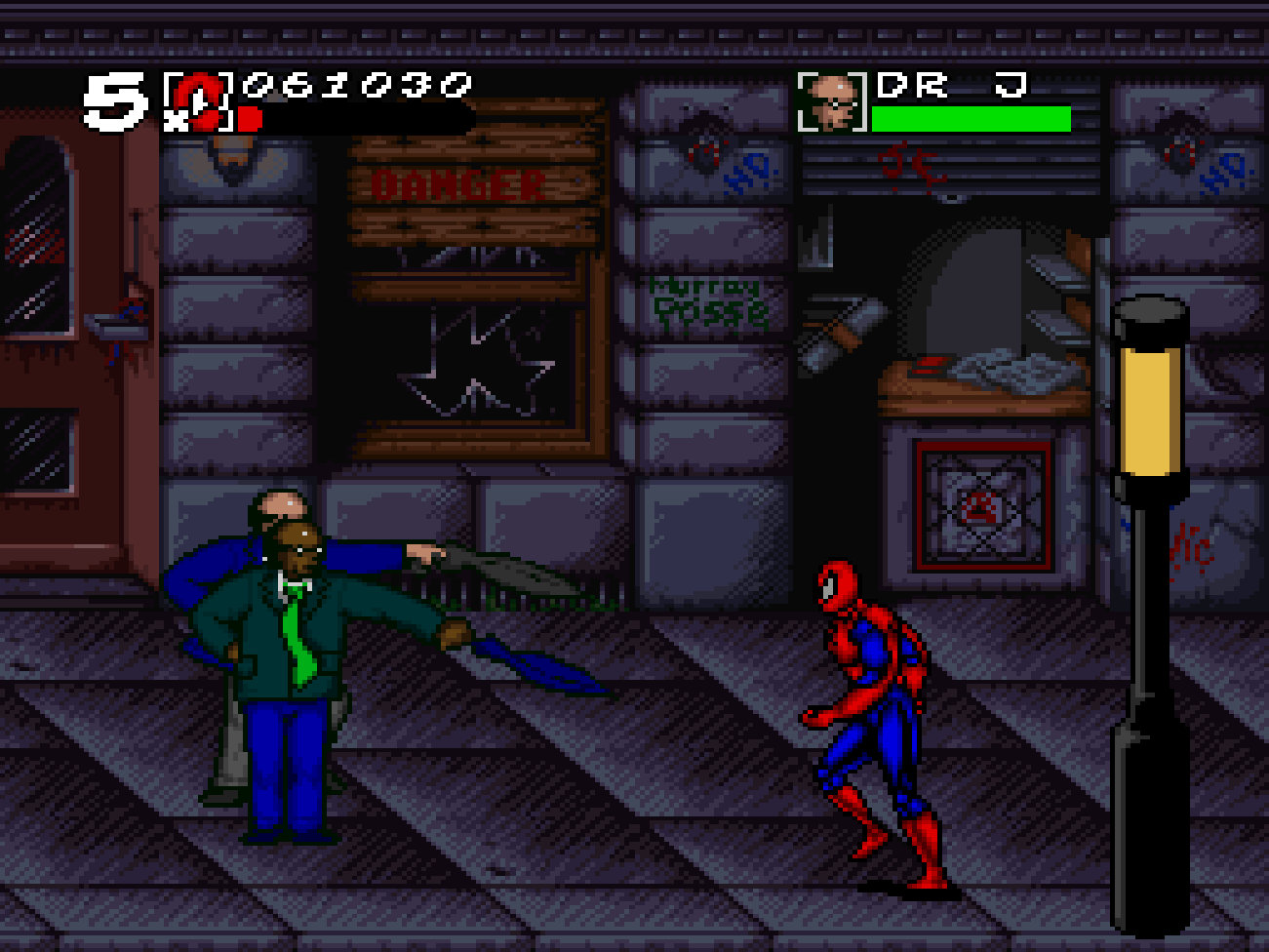
Maximum Carnage is no exception. It can be a challenging game, but it’s far from impossible. Both Spider-Man and Venom are well equipped to handle all of the random thugs that litter the game. Even the guys with umbrellas won’t stand a chance if you approach them correctly. The bosses tend to be the trickiest part of the game. Some encounters like the Fantastic Four robot will melt your health bar if you attack too aggressively. Frequent skirmishes with Carnage’s crew encourage you to micromanage the situation and exploit each boss’s weakness. Plenty of fun tactics lie in wait to discover between some surprising mobility quirks and a web grapple system that lets you grab people from across the screen.
Not only that, there are multiple ways to further soften the blow of the game’s difficulty. Multiple sections will prompt you to choose between Spider-Man or Venom. Sometimes their stages will overlap, but in most cases they go on separate routes entirely. I personally consider Venom to be the “easy mode” of the game, as he hits harder and has less stages to complete overall.
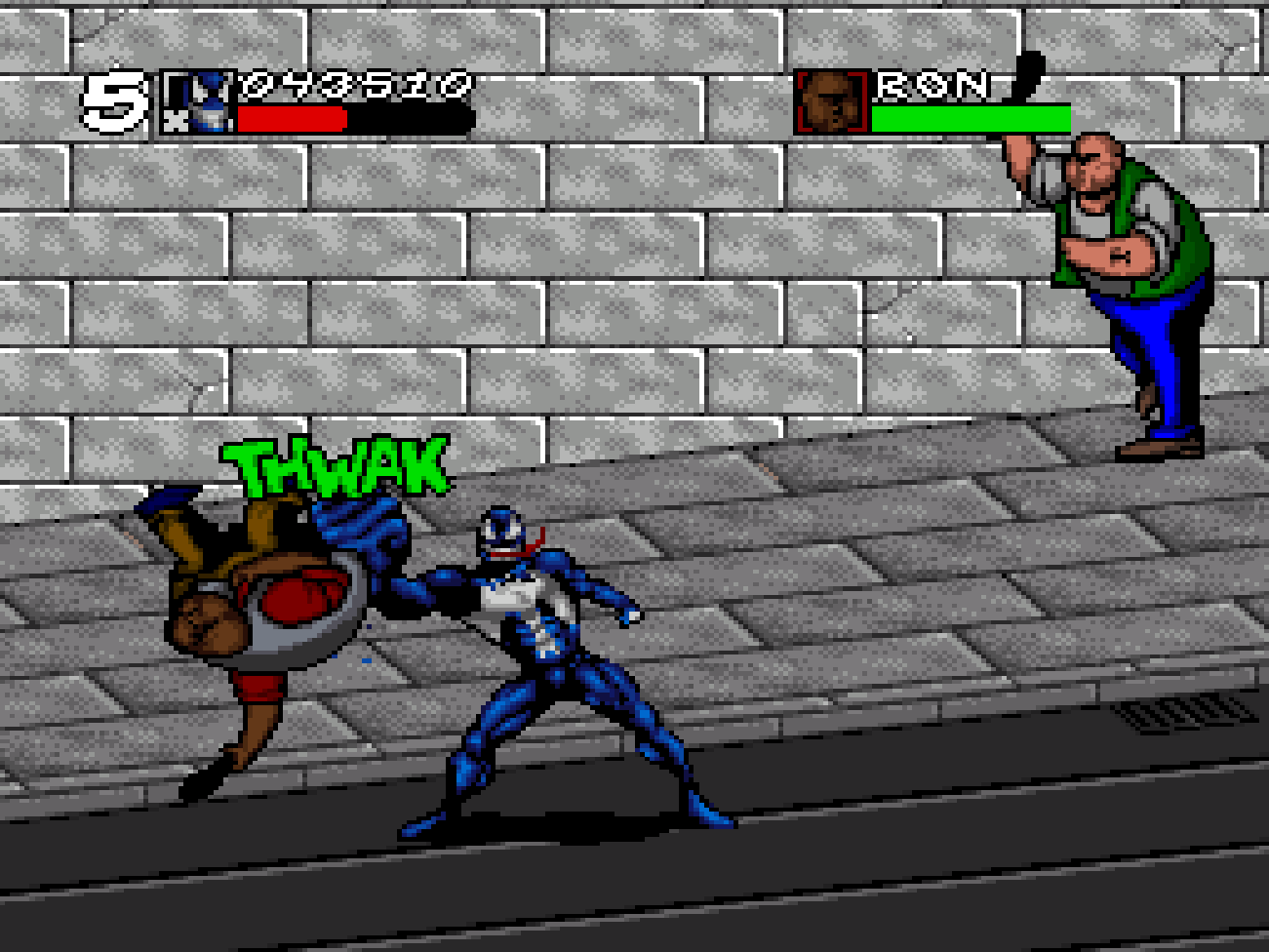
No matter which routes you take through the game, however, tracking down hidden powerups best ensures your survival. Maximum Carnage litters these power ups all over the place, from nearby building sides to water towers and beyond. It pays to be thorough in this game, as you can build up multiple safety nets for yourself in the form of extra lives and continues. Some levels even contain entrances to secret levels that further stock you up on resources.
Collectable super hero icons provide the best support. Maximum Carnage’s large cast is put to great use through a system where you grab orbs relating to different characters to summon them into battle. While most of these assists fall into the category of screen clearers, they generally need to be “aimed” in different ways which adds a layer of strategy to their use. How they assist you can also vary depending on your character of choice. Iron Fist demonstrates the most interesting difference, tying back to the overall philosophy of the playable characters. With Venom, Iron Fist unleashes a ferocious kick, yet for Spider-Man forgoes violence altogether and simply restores your health bar.
A run through Maximum Carnage involves a surprising amount of thoughtfulness. Between all of the collectibles, secrets, and how you manage your assists, a little planning goes a long way. These elements of the game not only extend its length, but give it a sense of depth beyond beating down bad guys.
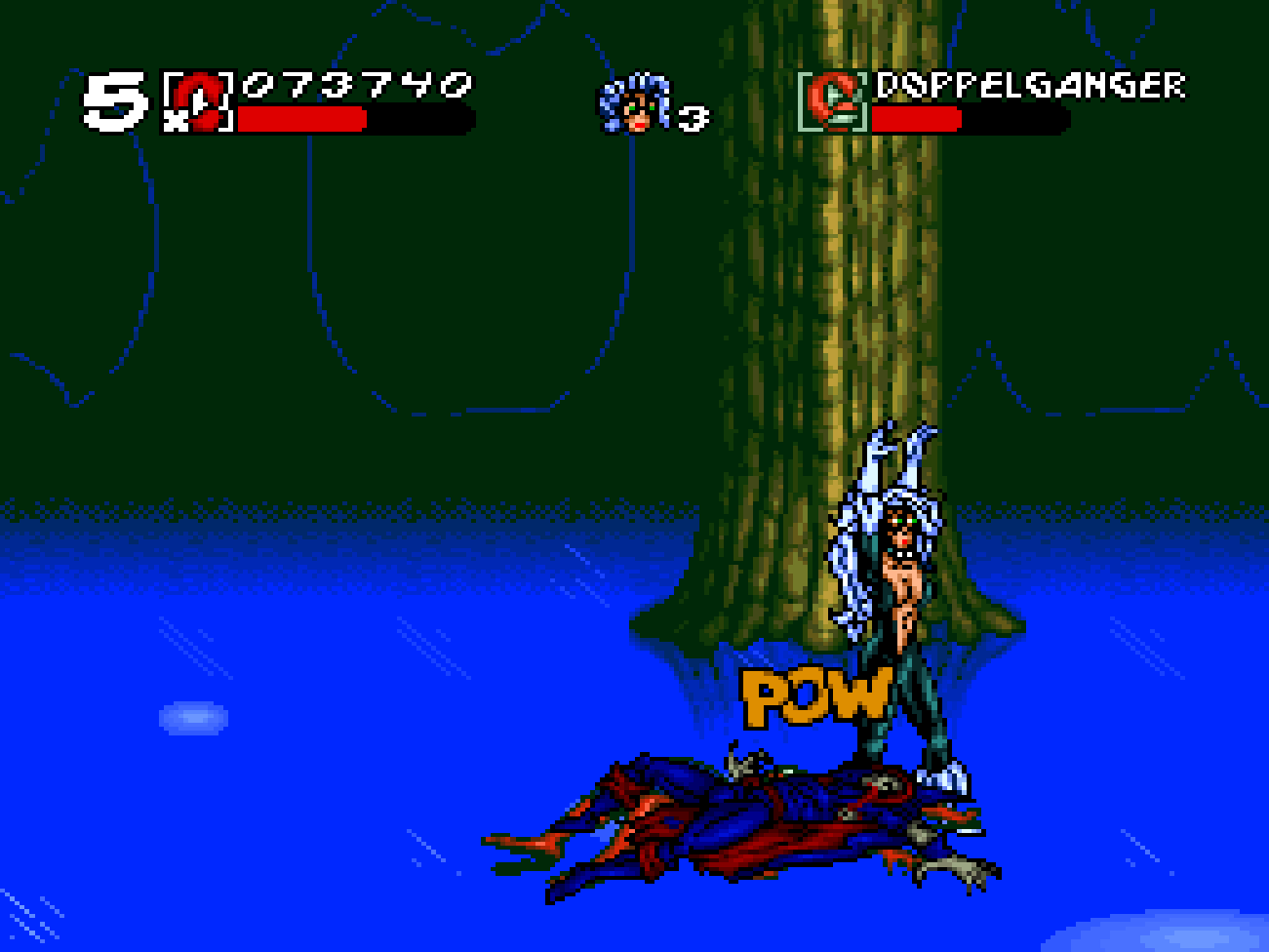
The accuracy system provides the ultimate proof that Maximum Carnage is best approached with a brain. In most games like this, the temptation to mash buttons looms ever present. Even if your fists initially fail to land into someone’s face, they may still tempt passersby to walk into them. You never know, right? If you play Maximum Carnage that way, however, you put yourself at a serious disadvantage.
If you cut back on the random flailing and instead land as many hits on enemies as possible in a row, you’ll briefly gain access to an extra powerful attack. These power moves do a large amount of damage. Many boss encounters can be cleared within seconds with them. Especially skilled uses of power moves can even take out multiple enemies at once.
By rewarding accurate play to such a degree, Maximum Carnage heavily incentivizes players to genuinely think about how they approach the game. Aggressive, accurate play leads to more efficient progress, yet it also leads to taking more risks. The limited time windows for power hits practically shouts at players to go for the kill, yet that may not always be the best move at the moment. Sometimes you need to patiently fish for the right opportunities to keep your health bar intact.

Overall, the gameplay systems of Maximum Carnage fit the source material well. In most scenarios, a Spider-Man game might struggle to justify spending most of its time fighting with no true diversions. Luckily, the original story offers plenty of excuses. Shriek’s powers rile up normal people into violence throughout the story, so the game easily justifies the admittedly odd premise of Spider-Man beating down normal people on the street. The story’s elongated pacing also allows for multiple opportunities for the players to clash with the villains. The beat-em-up- system perfectly complements the rollercoaster of action that the comic book provides.
The game also generally matches the story well on an aesthetic level. Visually, the character designs do not always look well drawn, yet it kind of works anyway. The odd style mixes the original designs with a cartoony look that charms just as often as it looks off. Spider-Man suffers the most for me graphics-wise, but Venom generally looks fantastic.
More than the visuals could ever hope to, however, the music does most of the heavy lifting carrying the game’s tone. Its rock soundtrack feeds into the madness that Carnage represents, often sounding equal parts unhinged and heroic. You couldn’t ask for a better pick than Green Jelly’s efforts here. For some songs, it seems like they literally didn’t ask for a better soundtrack and simply threw in some Black Sabbath regardless of if they had permission for it.
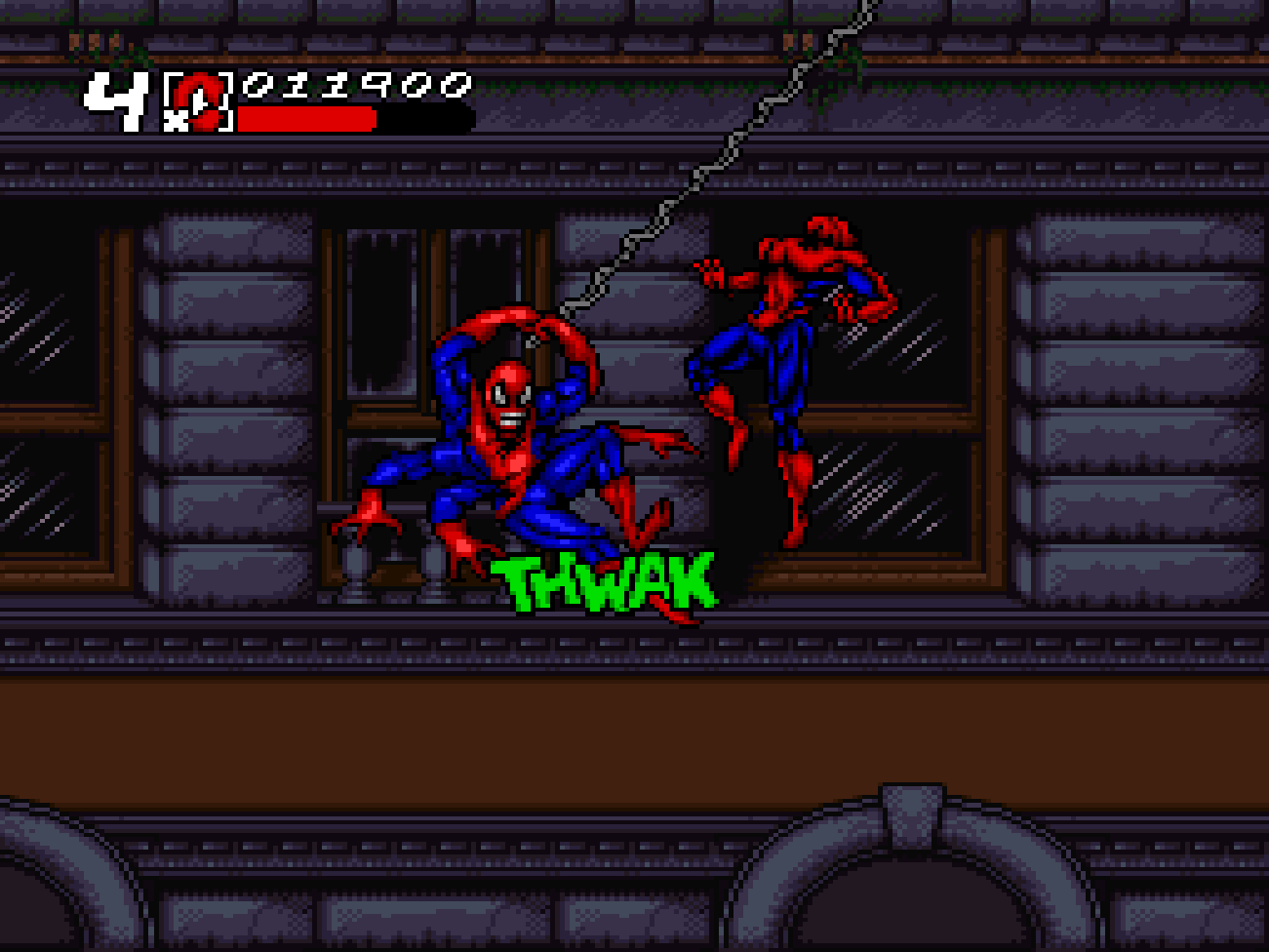
Maximum Carnage the comic book story and Maximum Carnage the video game reflect each other in interesting ways. They both share plenty of reasons to be looked down upon, yet contain more value than initially meets the eye. The only thing that truly separates them is their overall narrative ambition. The game faithfully captures the surface elements of the story while failing to dig beyond the surface.
It’s an understandable change to an extent. Focusing purely on an unambiguous battle against bad guys suits the concept of a video game much better than the comic’s morally gray tale.
However, that difference creates a rift that makes me hesitate to say that Maximum Carnage fully succeeds as an adaptation. Superhero battles are always fun to see, but Spider-Man should never forget his heart in the process. The Maximum Carnage game, while an interesting adaptation with plenty of merit, does exactly that.
I suppose where the Maximum Carnage fails as a Spider-Man game, it excels as a Venom game. Fortunately if the title is to be believed, this is just as much of a Venom game as a Spider-Man one, so it all works out in the end!
